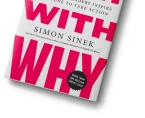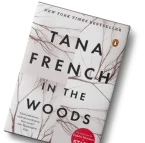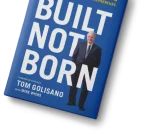
Is copywriting the same as content writing? Not quite—but the two are cousins, and the skills you develop in copywriting can transform your entire book-writing process. Copywriting focuses on clarity, emotional resonance, and persuasion—all of which are magic ingredients whether you’re writing a nonfiction guide or a work of fiction.
This post explores how you can leverage copywriting strategies to strengthen your book, from structure and pacing to voice and marketing. You’ll learn why copywriting for a book isn’t just possible—it’s powerful. Whether you’re brand new to writing or a seasoned author, applying copywriting skills to book writing can help you write sharply, connect more deeply, and reach more readers.
What Is Copywriting and How Is It Different From Content Writing?
At its core, copywriting is about persuasion. It’s the art of crafting words that drives clear action: to buy, subscribe, understand, and remember. Content writing, on the other hand, often informs, entertains, or educates without needing an immediate call to action.
When you ask, “is copywriting the same as content writing?”—the answer is no, but the techniques overlap beautifully. By borrowing copywriting techniques for book writing, you’ll infuse your manuscript with clarity, strong focus, and emotional impact.
5 Copywriting Principles You Can Use When Writing a Book
1. Know Your Reader—Then Write for Them
Copywriters begin with deep audience research. Who are they writing to? What pain points and desires do their readers have? Apply that to your book:
- Fiction: Create empathy by understanding your target reader’s emotional cravings—comfort, adventure, escape.
- Nonfiction: Position your book as the ideal solution to a reader’s problem, using language that resonates with their questions and aspirations.
2. Use Urgency and a Strong Hook
Copywriting thrives on hooks—opening lines that grab attention. You can use the same technique in your book:
- Chapter openers: Start with dramatic or intriguing action to draw readers into each section.
- Nonfiction introductions: Show the stakes immediately. What will the reader gain? What do they risk losing?
3. Keep It Simple, Clear, and Actionable
Copywriting is famous for its clarity. Good messages use short sentences, conversational tone, and everyday words. In your book:
- Avoid jargon-heavy language.
- Break big ideas into clear, readable chunks.
- Prioritize clarity over elaborate phrasing, especially in explanations or plot development.
4. Emotion Drives Connection
Almost every great piece of copy relies on emotion—joy, fear, curiosity, desire. Your book will benefit when you:
- Tap into curiosity by foreshadowing a revelation.
- Use emotional beats: hope, conflict, empathy, transformation.
- Connect with your reader’s emotional identity—show them themselves in your characters or lessons.
5. Use Persuasive Structures and Calls to Action
Copywriting uses proven structures: problem–agitate–solve; features–benefits–social proof. While your book might not end with “buy now,” you can still borrow:
- Before–after framing: Show character/emotional transformation with stark contrast.
- Social proof: Sprinkle in testimonials, real-world examples, or case studies (especially in nonfiction).
- Summary action steps: End chapters with reflection or “next-step” prompts.
Copywriting = Bestselling Book Formula
Estorytellers helps you shape your book with strategy, story, and words that move readers to act.
Craft Your BestsellerHow to Use Copywriting to Write Nonfiction Books
When writing nonfiction, your job is to teach and inspire action. Copywriting helps your nonfiction book become a powerful tool.
A. Hook + Promise + Preview Formula
- Hook: Open with a startling statistic, story, or question.
- Promise: State clearly what the reader will walk away with.
- Preview: Give a quick glimpse of how you’ll deliver on that promise.
This formula of copywriting for books aligns perfectly with copywriting landing pages, and it’s highly effective in nonfiction chapters.
B. Benefit‑Driven Chapter Titles
Instead of “Chapter 3: Time Management,” try “Chapter 3: Reclaim Two Hours Every Day.” The secret lies in offering transformation, not just information. This benefits-first mindset is copywriting gold.
C. Powerful Transitions and Signposting
Copywriters know readers scan. Guide them with clear signposts:
- “Here’s what to look out for next…”
- “By the end of this chapter, you’ll …”
- “Let’s unpack how this actually plays out…”
These cues improve comprehension and flow.
D. Use Micro‑Stories for Emotional Connection
Case studies aren’t just for business books—they create empathy and illustrate lessons. Frame them like compelling short ads: setup, tension, resolution, insight. Like copywriting at a massive scale.
Copywriting Isn’t Just for Sales Pages
At Estorytellers, we apply the same persuasive power to ghostwrite and promote your book for success.
Get Book Writing HelpHow Copywriting Supercharges Fiction Writing
Even fiction can benefit from copywriting’s persuasion tools—especially when pacing, tension, and hook matter.
A. Start With a Pitch‑Sized Logline in Mind
Before writing, create a logline like a book jacket description:
- “An amateur sleuth fights for truth in her small town.”
- “After a global blackout, a scientist races to restart civilization.”
Loglines help anchor plot, theme, and stakes, just like headline-driven copy.
B. Hook in Chapter One (and Chapter 12)
Copywriting for books teaches split-second attention. Use that in your chapters:
- Cliffhangers
- Intriguing mysteries
- High stakes emotionally or physically
Keep readers hooked to each page.
C. Minimize Filler, Maximize Purpose
Some copywriting for books fundamentals reduces wordiness. Fiction doesn’t need every detail spelled out—focus on moments that matter. Every scene should push the plot or deepen the character (or both).
D. Use Sensory and Emotional Triggers
Copywriting creates mental images and feelings quickly with rich sensory language. Tap into this in fiction:
- Physical sensations (“the scent of winter pine”)
- Emotional internal sensing (“her throat clenched in fear”)
It’s subtle yet compelling.
Free Guide: How to Get Academic Writing Jobs from Foreign Countries? (With VPN Tips)
E. Create a Story Arc Like a Sales Funnel
Your novel’s emotional journey can map to funnel stages: introduction (hook), buildup (awareness), midpoint surprise (interest), climax (desire/action), and resolution (conversion). Copywriting techniques keep that momentum emotionally and structurally flowing.
Sell Your Story with Strategic Copy
We blend copywriting and storytelling to write, publish, and market books that grab attention—and readers.
Start Your Book JourneyCase Study: Fiction Writing with Copywriting Techniques
Imagine a thriller: “The town’s water supply is poisoned—and you’ve only 48 hours to stop it.” Immediately, you’ve used hook, stakes, and time constraint. Throughout:
- Chapters begin with mini-subplots to hook the reader again.
- Mid-book twist is foreshadowed using emotional tension described in a copywriting style.
- Milestones: They echoed through the book like persuasive CTAs: “She had no time to lose.”
By applying a copywriting strategy, pacing improves, stakes are felt, and the story reads like it’s propelling you forward.
Book Writing Using Copywriting Skills: A Step‑by‑Step Blueprint
- Pre‑Write Planning
Craft a book-long elevator pitch. Who is it for? What promise do you deliver? Set chapter hooks with sub-promises. - Write with a Copywriter’s Mindset
Keep clarity central, aim to evoke emotion, and stay reader-oriented. Use simple words and a conversational tone. - Use Micro‑CTAs Internally
In nonfiction, include reflection prompts or action tasks at the end of chapters. In fiction, finish scenes on emotional “must-turn-the-page” beats. - Edit Like a Copywriter
During revisions, ask: Can this be clearer? Stronger? More evocative? Trim fluff, reinforce stakes. - Marketing‑Ready Draft
Copywriters are champions at headlines. Write your back-cover blurb and Amazon description early—and let your manuscript support it.
SEO Benefits: Writing With Copywriting Skills Pays Twice
When you write a book with copywriting clarity, you also prepare better content for SEO. Why?
- Better search‑friendly structure — clear sections, descriptive headings
- Engaging metadata — blurbs, chapter summaries, author bios
- Content repurpose friendly — newsletters, blog posts, social posts
You’re building a platform if you write with copywriting in mind.
Every Bestseller Starts with a Hook
We use proven copywriting strategies to shape books that not only read well but sell better.
Get a Copy-Driven BookIs Copywriting the Same as Content Writing?
Not exactly. Copywriting sells; content writing informs or entertains. But when you ask, “Can copywriting help you write a book?”—the answer is yes with strength. You don’t have to be a copywriter by trade to benefit from its principles. You just need to harness them to write in ways that engage, persuade, and convert—whether to turn pages or inspire action.
Why Fiction Writing Feels Harder And How Copywriting Skills Help
Fiction can feel like freefall, chaotic, and imaginative. Copywriting for books doesn’t limit that; it amplifies it. You can write poetic scenes and also use copywriting for tension and momentum.
Where fiction lacks purpose, copywriting adds clarity:
- Emotional stakes are clearer
- Pacing is tighter
- Voice is sharper
In the world of book writing with copywriting experience, fiction doesn’t lose its soul—it gains direction.
Conclusion
Copywriting for books is not just for marketers—it’s for any writer who wants to connect, persuade, and be remembered. If you’re wriiting your first memoir or dreaming up your next thriller, your book will be stronger if your writing practices focus on clarity, emotional resonance, and structure.
So, can copywriting help you write a book? Absolutely. And while copywriting and content writing share common ground, the targeted intensity of copy is uniquely effective for book writers looking to master voice, hook, and impact.
If you’re ready to use copywriting to guide your book draft to stronger openings, sharpen your chapters, and connect emotionally from page one, Estorytellers can help. With a team of writers, editors, and strategists who blend storytelling with persuasive clarity, we’ll support you from manuscript to marketing and beyond.
Let your story resonate. Let it move readers. And let it sell. You deserve that—and your readers will too.
FAQs
1. Can copywriting help you write a book?
Yes, copywriting can absolutely help you write a book. It teaches you how to write clearly, connect emotionally with readers, and keep their attention—all essential for both fiction and nonfiction books.
2. Is copywriting the same as content writing?
No, copywriting and content writing are different. Copywriting is designed to persuade or sell, while content writing focuses more on educating or entertaining. Both skills are useful, but copywriting gives you sharper tools for writing books that hold attention.
3. How do I use copywriting skills for book writing?
Use your copywriting skills to create strong hooks, build emotional tension, and guide the reader through your book. Keep your language clear and engaging, just like in great ads or emails.
4. Can book writing with copywriting experience improve fiction?
Yes, fiction writing with copywriting skills can improve your story. You’ll write better dialogue, stronger opening scenes, and create characters that connect more deeply with readers.
5. What’s the benefit of copywriting for a book launch?
Copywriting helps you write better book descriptions, emails, and social media posts. It makes your book more appealing to readers and helps you sell more copies.






























